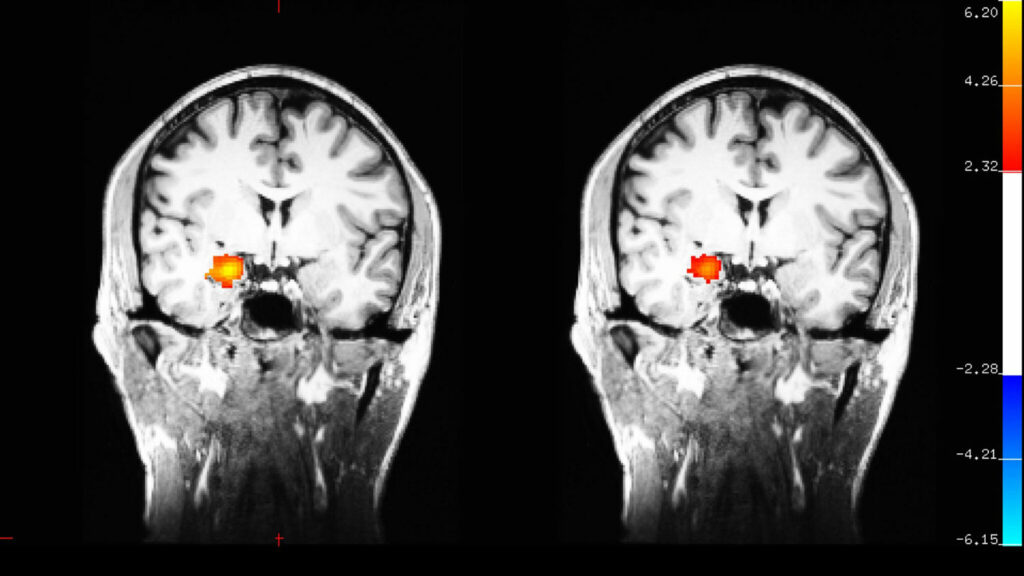Everyone is talking about mindfulness, but what exactly does this new buzzword mean? Where does it come from and what are the benefits? How can you use it to bring more ease into your everyday life? And why we need our approach called modern mindfulness? We will answer the most frequently asked questions about the topic and at the end give you our interpretation of it.
One gets the feeling that mindfulness and Zen are randomly combined with brand names. We always wonder how much mindfulness is actually present in the company? So let’s find out, what it is first.
Contents:
- What is mindfulness?
- What mindfulness is not
- Why is mindfulness so important?
- What has MBSR to do with mindfulness?
- Can mindfulness change the brain?
- What are mindfulness practices besides meditation?
- The Evano definition of Modern Mindfulness
What is Mindfulness?
Mindfulness is a special form of awareness. We perceive the present moment with everything that belongs to it – our feelings, thoughts and sensory impressions. Without judgment and with acceptance. What sounds difficult at first can, like everything, be learned. But more about that later.
A question we are often asked is whether mindfulness is the same as meditation. Our answer: yes and no. Meditation is the general term for a number of techniques that train you to consciously direct your attention, such as to your breath. Mindfulness, however, is about consciously noticing and observing the moment in a non-judgmental way.
We see meditation as a kind of exercise for the mind and mindfulness is the implementation in your everyday life.
What mindfulness is not
Even though the topic is much more popular nowadays than it was a few years ago, there are still many misconceptions circulating about it. Many people are hesitant to try mindfulness exercises because they have misconceptions about the subject. Two of the biggest misconceptions are as follows:
Misconception #1: The mind must be blank
Mindfulness does not mean that you should tensely try to suppress all thoughts in order to empty the mind. Rather, it is about becoming aware of what we are thinking about and, more importantly, when. It is perfectly okay to observe your thoughts during meditation. Becoming aware of them without judging them and then letting them go is a desirable state.
Misconception #2: Negative thoughts should be suppressed so that you only deal with the positive
The second common misconception is that you must push all negative thoughts aside and then turn to the positive in life. This kind of toxic positivity has nothing whatsoever to do with mindfulness. Rather, it is about openly facing and accepting negative experiences and thoughts. We welcome our feelings and observe them. With a little practice, we are then able to recognize thoughts and feelings that arise and be able to look at our reaction with distance.
We are then able to accept these feelings and thoughts in a non-judgmental way and no longer have the desire to suppress them through external influences (by distracting ourselves with social media, Netflix, etc.). By doing this, they automatically lose their power over us.
Why is mindfulness so important?
Over the past few decades, many studies have been done on the topic of mindfulness and the effects it has on people. Some of the benefits include better mental health, greater stress resistance (also called resilience), worrying less, reduced overthinking and increasing feelings of gratitude.
Especially in today’s fast-paced world, time seems to slip through our hands. Many people feel tired in their daily tasks, the competition and demands on us are getting bigger and bigger – faster, better, more awesome. With our thoughts we are often in the future or in the past. But rarely do we stop and pay attention to the present moment.
Mindfulness consciously puts the focus on the present moment, not on yesterday or tomorrow. As a result, we become calmer and can sustainably change our behavior, our reaction to situations and even our brain for the better:
What has MBSR to do with mindfulness?
One of the best-known forms of mindfulness is mindfulness-based stress reduction (MBSR for short), developed by molecular biologist Jon Kabatt-Zinn. He is a pioneer with his work. He developed this method as early as the seventies and thus made mindfulness respectable in the Western world.
The eight-week training teaches you to pay attention to your physical sensations and to observe your thoughts and emotions in a non-judgmental way. The training combines traditional meditation techniques with exercises from cognitive behavioral therapy and mindful movement. The training has proven to be extremely effective.
Can mindfulness change the brain?
Brain researchers have found in countless studies that mindfulness alters activity in areas of the brain that regulate the ability to concentrate, emotions, and physical sensation.1

Another study by Gaelle Desbordes also found that after eight weeks of mindfulness training, the amygdala’s response to emotional content (that’s the area in the brain that is responsible for fear and evaluation and recognition of potential danger) was less activated than before the training. 2
This means that one reacts less anxiously or stressed to situations than before the training.
What are mindfulness practices besides meditation?
Most mindfulness exercises can be easily integrated into any daily routine. But it’s not always necessary to get into a formal meditation posture. One of our favorite exercises is to focus on and sharpen our own senses. Nowadays, we are exposed to so many stimuli that the brain is constantly busy filtering out unnecessary stimuli from our consciousness.3
1. Sharpen the senses
If we now consciously take a few minutes and concentrate on the senses of our choice, we stimulate our parasympathetic nervous system, which stands for calm and relaxation.
Seeing: Look around, what do you perceive? Now turn your eyes to an object or a point on the wall – try not to focus. Concentrate on what is in your peripheral vision. Observe how your field of view changes. Stay in this state as long as you like.
Feel: Notice the ground beneath you. Are you sitting? Are you lying down? How does it feel underneath you? Feel how your body touches the ground. Is it hard? Soft? How does it feel on your skin? Can you feel the air? Your clothes?
Listening: What do you hear in your immediate environment? What do you perceive outside your room?
Smell: Breathe in and out consciously. What do you smell?
Taste: Notice the inside of your mouth. What do you taste? The aftertaste of your previous meal or toothpaste? How does your jaw feel? Is it tense?
2. Mindful eating
Yes, mindful eating is an exercise and needs to be learned. As a toddler, we intuitively eat only as much as is good for our bodies. Over the years, most of us lose this awareness. Eating becomes a secondary matter, we scroll through our cell phone, watch Netflix or Youtube, chat or snack on the side.
So consciously take time to eat. Ask yourself beforehand: Why am I eating now? Am I really hungry or do I just crave something to eat? Chew each bite carefully. What do you taste? Put down your fork in between and listen to yourself – are you already full and continue to eat out of habit or because you want to empty your plate?
3. Doing nothing
This exercise can be quite difficult for some. Just really doing nothing triggers anxiety in many people. That’s okay. Our subconscious mind wants to protect us from being confronted with things that are currently not ideal in our lives or from an issue from the past that we may not be able to deal with. If your gut tells you that this exercise is not for you, feel free to pick another one!
Take a few minutes (15-30 minutes is best) just for you. Turn off your cell phone. Make yourself comfortable and look forward to doing nothing. Without a guilty conscience. Just you. When you have come to rest, now consciously notice: What are you thinking? What do you feel? All thoughts and feelings are ok. Let them come and if you like also let them go. You decide. Pure wellness for your mind and soul.
The Evano definition of Modern Mindfulness
Over the years we have developed our own form of mindfulness, through which we have noticed that it is particularly supportive of mental wellness and inner peace. Our Modern Mindfulness approach combines ancient wisdom with current neuropsychological findings to meet the demands of today’s world.
1. No Esoteric – Science based
Many years mindfulness was associated with esoterism. These cover pseudo-science topics like astrology, tarot or other things that try to explain personal life by external influences. In contrast, Modern Mindfulness by Evano focuses on the journey into one’s inner self to find answers. All theories are scientifically sound.
2. Celebrating life as a form of mindfulness
Many mindful people get so “mindful” after a certain point that they completely refuse enjoyment of life. It goes so far that they deny any experience of pleasure because they think it is bad for their body and mind. This phenomenon is called spiritual bypassing and is not at all desirable. At Evano, mindful enjoyment is the highest form one can achieve. When you are so in tune with yourself and the world that you can trust your body to live pleasure in proper balance.
3. It is applicable in everyday life
All good concepts are of no use if they cannot be applied in everyday life. Inspired by the Zen philosophy, Modern Mindfulness by Evano is an attitude towards life that brings us back to the present moment again and again, every day. Knowledge is one side of the coin, daily application is the other.
4. Unconditional compassion
Our compassion is not reserved for certain groups of people, but embraces everyone. We do not distinguish between friends and enemies, foreigners or natives, and believe in the common existence of all living beings on this planet. Modern Mindfulness by Evano is not reserved for any particular ethnicity, belief system or worldview. We support trust and honesty towards others and ourselves.
TL;DR
Mindfulness is a special form of awareness. We perceive the present moment with everything that belongs to it – our feelings, thoughts and sensory impressions without judgment.
Mindfulness consciously puts the focus on the present moment, not on yesterday or tomorrow. As a result, we become calmer and can sustainably change our behavior, our reaction to situations and even our brain for the better.
Brain researchers have found in countless studies that mindfulness alters activity in areas of the brain that regulate the ability to concentrate, emotions, and physical sensation.
Modern Mindfulness is a concept developed by Sarah Dorweiler & Gerald Reimertz that focus on finding inner peace and balance within. It builds on the conscious pause and the observation of one’s own thoughts without judgment to strengthen the intuition. Modern Mindfulness combines ancient wisdom with current neuropsychological findings to meet the demands of today’s world.
Sources:
1 https://www.ncbi.nlm.nih.gov/pmc/articles/PMC6312586/
4 https://en.wikipedia.org/wiki/Astrology
Further studies and links on the topic
https://www.ncbi.nlm.nih.gov/pmc/articles/PMC3679190/
https://www.ncbi.nlm.nih.gov/pmc/articles/PMC4203918/

